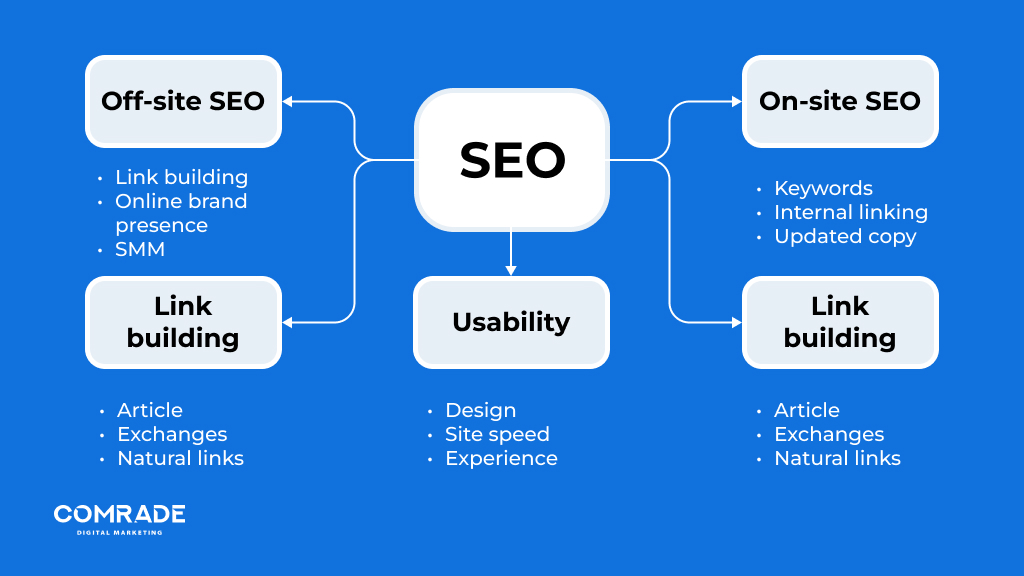Exploring What Is Ruled Out a Default Medium in Google Analytics for SEO
Exploring What Is Ruled Out a Default Medium in Google Analytics for SEO
Blog Article
Introducing the Unconventional Mediums in Google Analytics Beyond Default Setups
In the realm of digital analytics, Google Analytics stands as a keystone for organizations seeking to recognize their on-line existence. While default settings use important understandings, real depth of understanding depend on checking out the non-traditional mediums that usually go undetected. By venturing past the surface and delving right into the intricacies of social media sites data, email project performance, recommendation traffic resources, straight traffic patterns, and custom channel groups, a treasure of info awaits those happy to welcome a more nuanced method. Nonetheless, what exists below these unusual tools might just redefine exactly how companies perceive and strategize their online initiatives.

Leveraging Social Media Insights
Occasionally neglected, yet exceptionally useful, is the practice of leveraging social media understandings within the world of Google Analytics. By integrating information from systems like Facebook, Twitter, Instagram, and LinkedIn right into Google Analytics, companies can acquire a much deeper understanding of their audience and the efficiency of their social networks projects.
Through this combination, marketers can examine and track customer habits on their website that originates from social networks systems. They can determine which social media networks are driving the most traffic, which content is reverberating with the audience, and which projects are converting the most leads. This insight permits data-driven choices to optimize social media sites methods and boost overall marketing efficiency.
In addition, by combining social media sites understandings with Google Analytics, businesses can produce a lot more targeted and customized campaigns - what is not considered a default medium in google analytics. They can utilize market info, interests, and online habits gathered from social media sites to fine-tune their target market segmentation and provide customized messages that resonate with details client groups. This targeted approach can lead to higher interaction, increased conversions, and eventually, improved roi
Revealing Email Project Efficiency
Uncovering Email Project Efficiency entails analyzing crucial metrics and performance signs to review the performance of email advertising and marketing initiatives. When diving right into e-mail project efficiency, it is important to assess metrics such as open prices, click-through rates, conversion prices, and unsubscribe rates. Open up prices indicate the percentage of recipients that opened the e-mail, giving understanding into the efficiency of subject lines and sender names. Click-through prices measure the percentage of recipients who clicked links within the e-mail, showing involvement levels. Conversion rates track the percent of recipients that completed a wanted activity after clicking on a link in the e-mail, such as buying or signing up for a newsletter. Unsubscribe prices highlight the number of recipients that opted out of obtaining more e-mails, losing light on e-mail material top quality and relevance. By assessing these metrics, marketing experts can tweak their e-mail campaigns for much better engagement and efficiency.
Analyzing Reference Website Traffic Sources
After assessing the efficiency of e-mail campaigns via vital metrics such as open rates and conversion rates, the following essential step is assessing referral website traffic sources in Google Analytics to comprehend where website site visitors are coming from and exactly how they connect with the site. Referral website traffic resources describe the sites that guide users to your website with clickable links. By delving right into this data, services can obtain insights into which exterior platforms are driving web traffic to their site, whether it be social media sites systems, partner sites, or on the internet directory sites.
Examining reference website traffic can provide useful info on the efficiency of outside advertising initiatives and partnerships. It assists organizations recognize high-performing recommendation resources that contribute considerably to internet site web traffic and conversions. By comprehending the habits of site visitors coming from different reference resources, businesses can tailor their advertising and marketing approaches to optimize engagement and conversions. Google Analytics provides comprehensive reports on referral web traffic, allowing businesses to track the performance of each referral resource properly and make data-driven choices to enhance their on-line visibility.
Checking Out Straight Traffic Patterns
Discovering the direct web traffic patterns in Google Analytics supplies useful understandings right into customer behavior and the efficiency of campaigns - what is not considered a default medium in google analytics. Straight traffic refers to site visitors that come down on a website by straight inputting the URL right into their web browser, making use of bookmarks, or clicking on untagged links. Comprehending straight web traffic patterns can help marketers assess the influence of offline advertising and marketing efforts, brand recognition, and the efficiency of word-of-mouth recommendations
By diving right into direct web traffic data, companies can discover important information concerning user intent and brand loyalty. Evaluating the actions of straight visitors, such as the pages they visit, the time invested in site, and the conversion rate, can offer a much deeper understanding of customer involvement and the total effectiveness of the site in converting site visitors into customers.
In addition, tracking direct web traffic patterns gradually enables businesses to determine fads, seasonality results, and the success of particular projects or promos in driving direct sees. This information can after that be made use of to improve advertising approaches, optimize website web content, and boost the general user experience to make the most of conversions.
Utilizing Custom Channel Groupings
Using custom-made channel collections in Google Analytics enables companies to categorize and evaluate their web site traffic based upon specific criteria, supplying useful understandings for enhancing advertising and marketing approaches. Personalized network groups allow companies to develop their very own tailored collections of web traffic sources, such as social media sites, organic search, e-mail projects, and reference traffic. By defining these collections, organizations can acquire a deeper understanding of exactly how different advertising networks add to their website traffic websites and conversions.
This feature is particularly helpful my website for services with diverse marketing strategies across numerous platforms. For instance, a company running both paid and organic social media projects can set apart between the 2 to assess their individual efficiency properly. In addition, custom network groups can aid recognize any kind of forgotten or taken too lightly website traffic sources that may be driving valuable interaction.
Verdict

By venturing beyond the surface area and delving right into the ins and outs of social media data, e-mail project performance, referral traffic resources, straight website traffic patterns, and custom-made network collections, a treasure chest of information awaits those eager to welcome a much more nuanced strategy. They can determine which social media networks are driving the most traffic, which content is resonating with the audience, and which projects are converting the most leads.After assessing the performance of e-mail projects through vital metrics such as open rates and conversion rates, the next important step is evaluating reference website traffic sources in Google Analytics to comprehend where web site site visitors are coming from and exactly how they engage with the site. Custom-made channel groups allow business to develop their own personalized groups of website traffic sources, such as social media, organic search, email campaigns, and referral traffic. By leveraging social media understandings, uncovering e-mail campaign performance, examining Your Domain Name reference traffic resources, checking out straight web traffic patterns, and utilizing customized network groups, marketing professionals can gain important insights right into their on-line presence.
Report this page